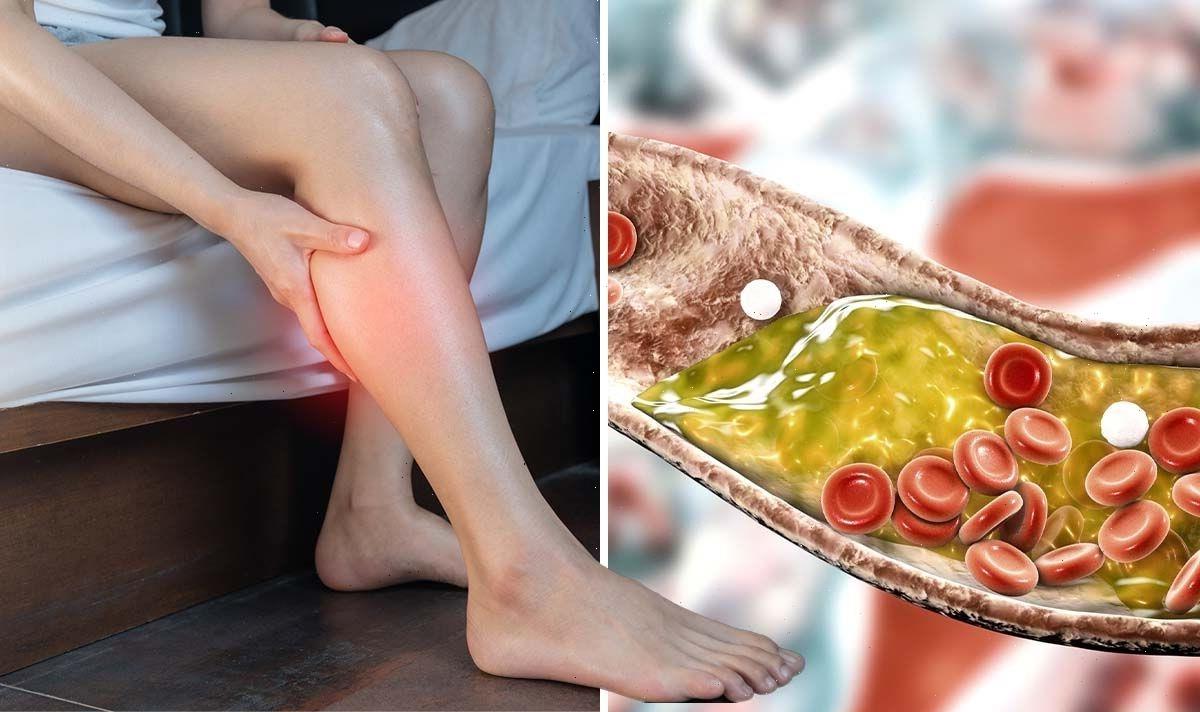High cholesterol: Nutritionist reveals top prevention tips
We use your sign-up to provide content in ways you’ve consented to and to improve our understanding of you. This may include adverts from us and 3rd parties based on our understanding. You can unsubscribe at any time. More info
“Low-density lipid cholesterol (LDL) is known as ‘bad cholesterol because high amounts in the blood cause blockages in the arteries and increase the risk of heart problems or a stroke,” said Dr Rodney Foale, Consultant Cardiologist at the Harley Street Clinic, part of HCA Healthcare UK. That’s why it’s important to keep your levels in check as the condition can progress to further issues.
High cholesterol is considered the precursor of serious health problems, according to the NHS.
Dr Foale said: “If left untreated, over time high cholesterol can lead to atherosclerosis.
“Arteries become blocked with fatty substances called plaques – which can result in heart attack and stroke.”
This process that leaves your arteries clogged can sometimes lead to “serious, and often fatal problems”, including critical limb ischaemia.

This potentially “fatal” condition could draw attention to the underlying problem – high levels of cholesterol in your blood.
He continued: “Critical limb ischaemia occurs if the blood flow to the legs becomes severely restricted.”
However, this doesn’t occur without symptoms cropping up.
As the condition is triggered by reduced blood flow to your legs, this is the area where symptoms can be spotted.
Dr Foale listed the symptoms of critical limb ischaemia:
- A severe burning pain in your legs and feet that continues even when you’re resting
- Your skin turning pale, shiny, smooth and dry
- Wounds and ulcers (open sores) on your feet and legs that do not heal
- Loss of muscle mass in your legs
- The skin on your toes or lower limbs becoming cold and numb, turning red and then black, and/or beginning to swell and produce smelly pus, causing severe pain (gangrene).
The expert added: “An angioplasty or bypass graft is usually the recommended treatment, however, in some cases amputation below the knee may be necessary.
“If you think you’re developing symptoms of critical limb ischaemia, you should contact your GP urgently for diagnosis.”

Unfortunately, there are not many warning signs of high cholesterol as red flags usually appear only as the condition progresses.
Dr Foale said: “It is a hidden risk factor, which means it happens without us knowing.
“If they feel you could be at risk, your GP will refer you for a simple blood test to check your cholesterol – this is the only way to know if your cholesterol is too high.
“They will base this on your age, weight, smoking status, high blood pressure, if you have diabetes, or whether there is a family history of high cholesterol or heart problems.”

How to lower high cholesterol
From lifestyle changes to medicine, there are different interventions available for lowering your levels.
The key of a cholesterol-lowering diet is cutting down on saturated fat, found in the likes of sausages, cheese and biscuits, the NHS reports.
Other lifestyle tweaks that can benefit your levels include exercise, quitting smoking and cutting back on alcohol.
However, some people will need to take a medication called statins to keep their levels in the safe zone and prevent further complications.
Source: Read Full Article
